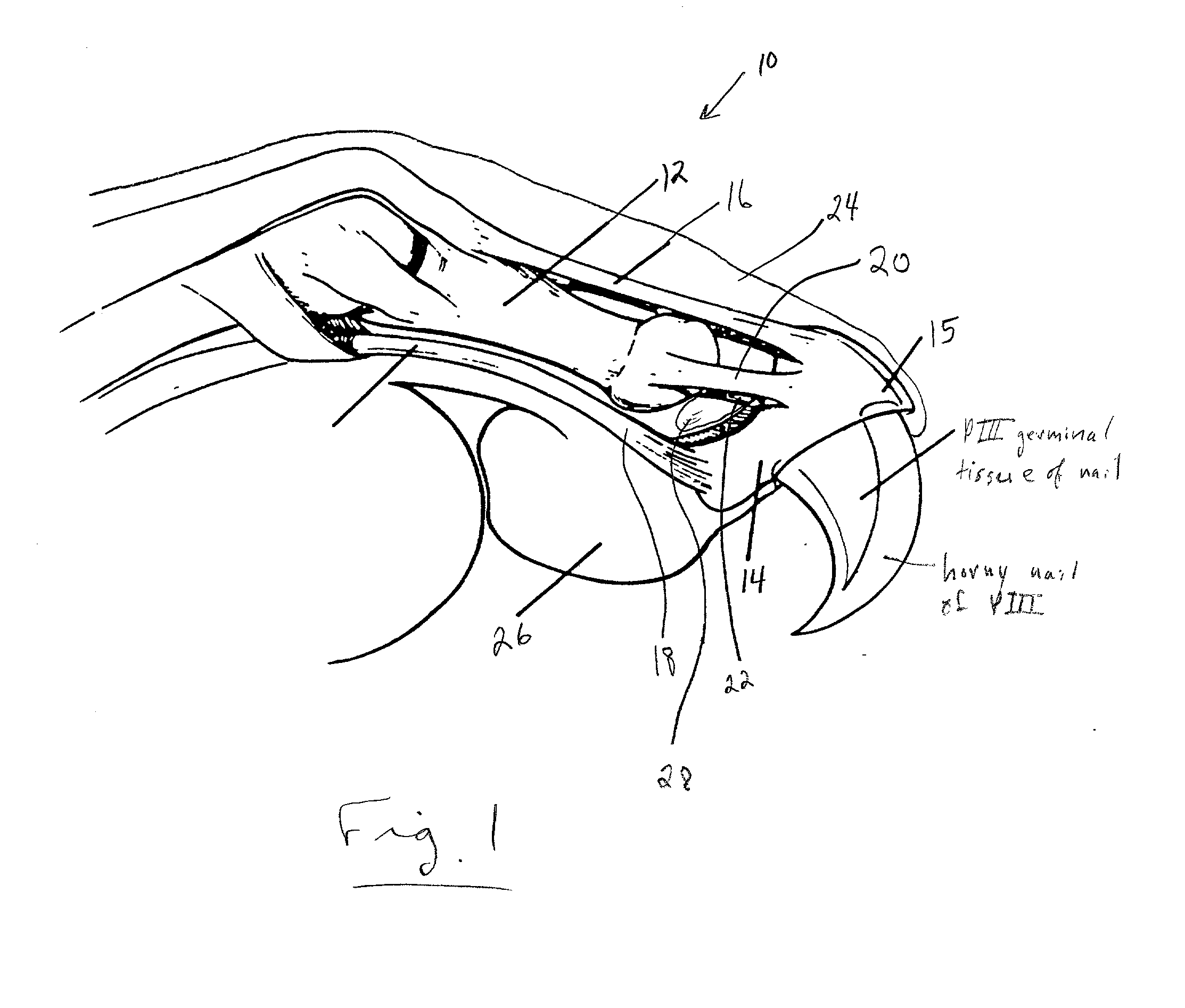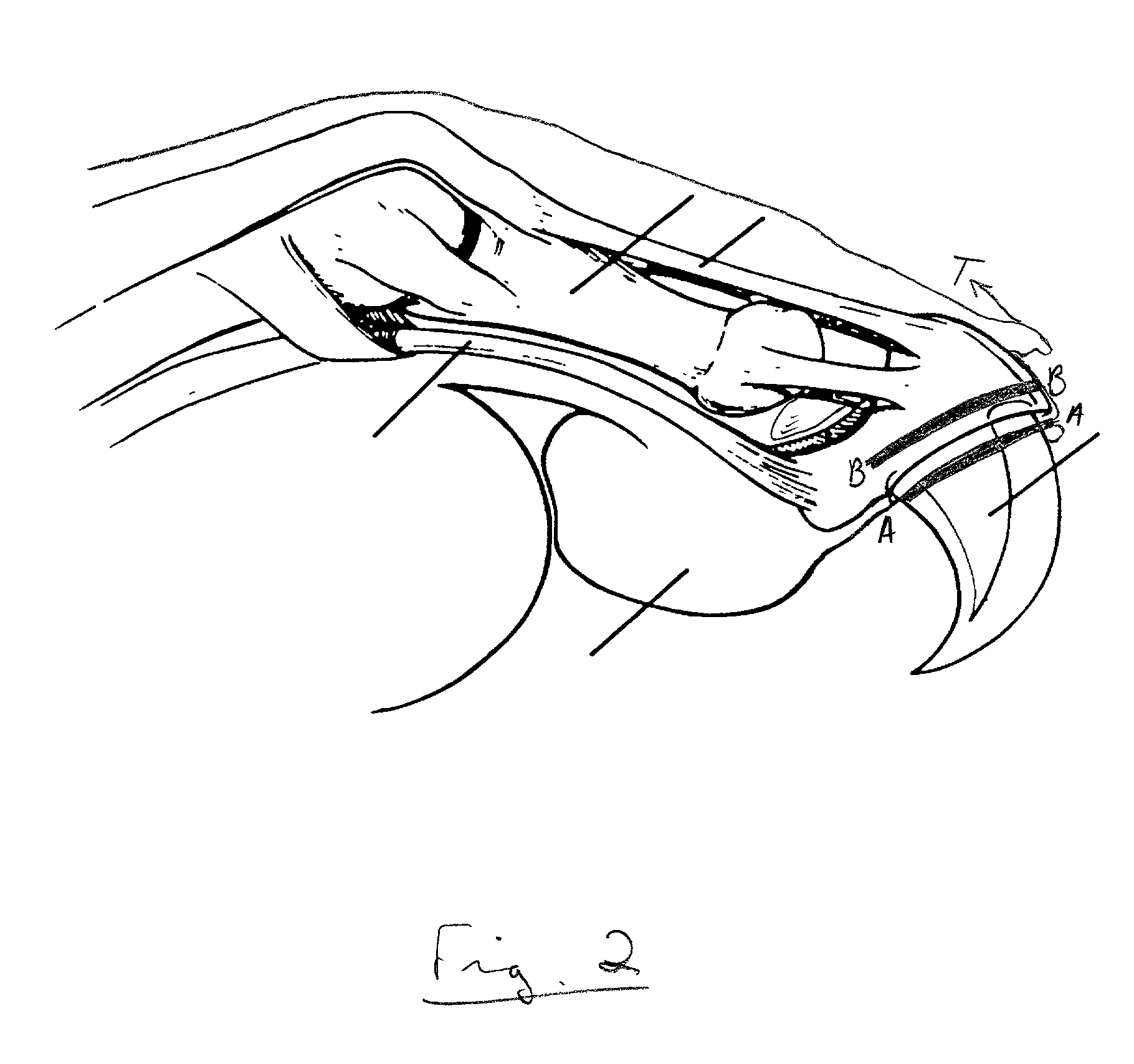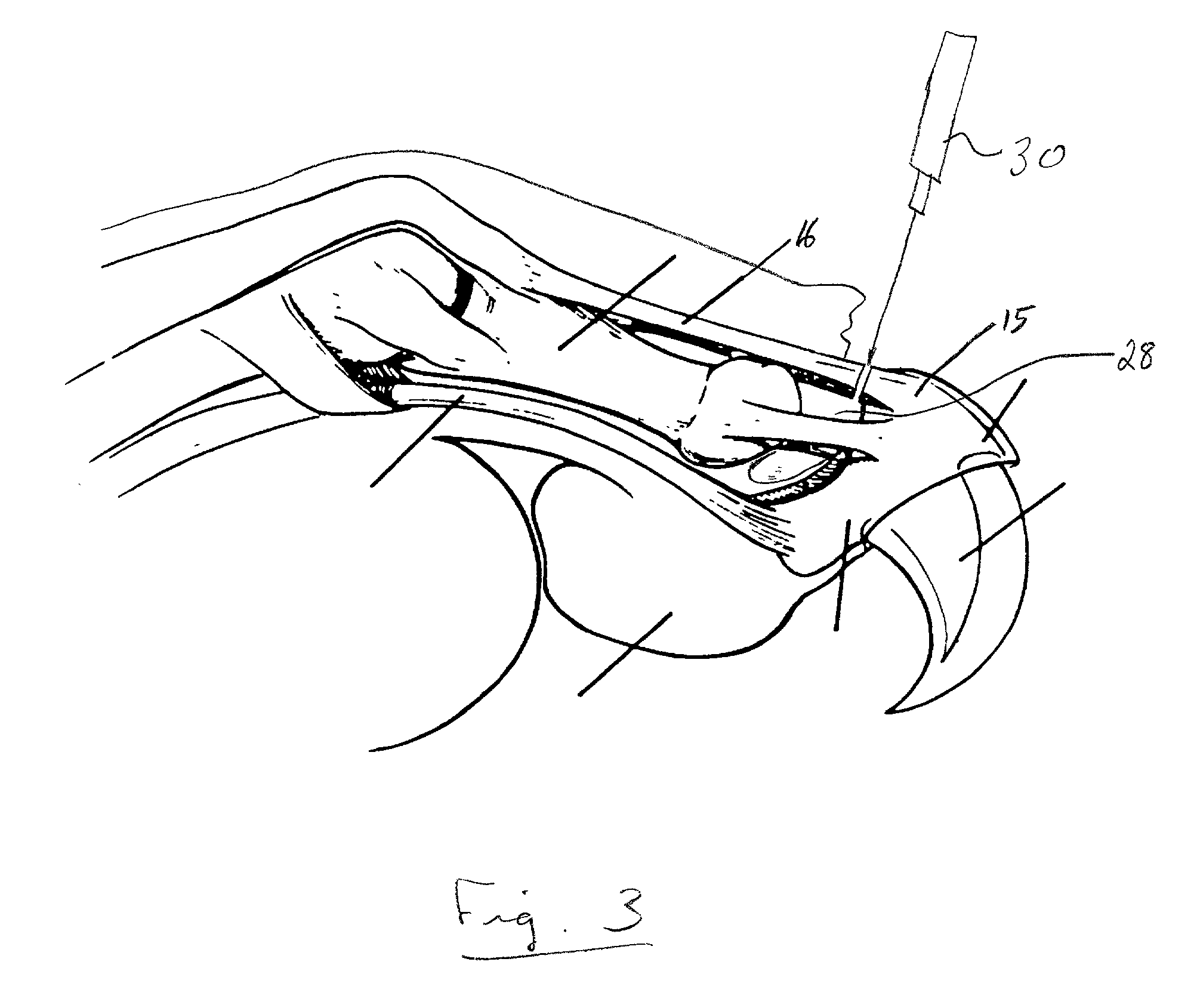Laser onychectomy by resection of the redundant epithelium of the ungual crest
- Summary
- Abstract
- Description
- Claims
- Application Information
AI Technical Summary
Benefits of technology
Problems solved by technology
Method used
Image
Examples
Embodiment Construction
[0041] The process of the present invention proceeds as illustrated in the Figures. FIG. 1 shows a feline appendage 10, including the second phalanx 12 and the third phalanx 14 with the ungual crest 15. The phalanges 12 and 14 are connected by the extensor tendon 16, the flexor tendon 18, the collateral ligaments 20 and 22, the epithelium 24 and the pad 26. The synovium 28 is positioned in the joint between the second and third phalanges 12 and 14. It also connects the phalanges together.
[0042] A preliminary step to this procedure is the cleaning of the area to be operated upon. The patient should be premedicated and anesthetized in accordance with aseptic surgical protocol. The hair need not be clipped because the area is normally devoid of hair. The patient is prepped in lateral recumbancy and draped. A forcep is placed upon the claw that is to be removed.
[0043] There are four major steps to the process. They are (1) resection of the redundant tissue of the ungual crest; (2) incis...
PUM
 Login to View More
Login to View More Abstract
Description
Claims
Application Information
 Login to View More
Login to View More - R&D
- Intellectual Property
- Life Sciences
- Materials
- Tech Scout
- Unparalleled Data Quality
- Higher Quality Content
- 60% Fewer Hallucinations
Browse by: Latest US Patents, China's latest patents, Technical Efficacy Thesaurus, Application Domain, Technology Topic, Popular Technical Reports.
© 2025 PatSnap. All rights reserved.Legal|Privacy policy|Modern Slavery Act Transparency Statement|Sitemap|About US| Contact US: help@patsnap.com



